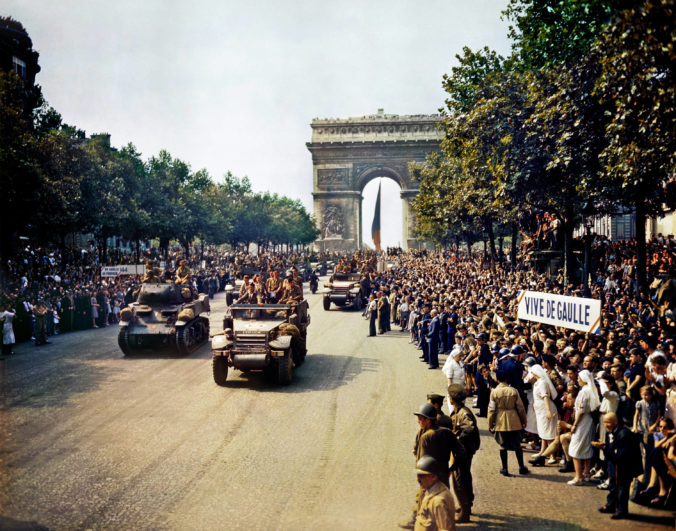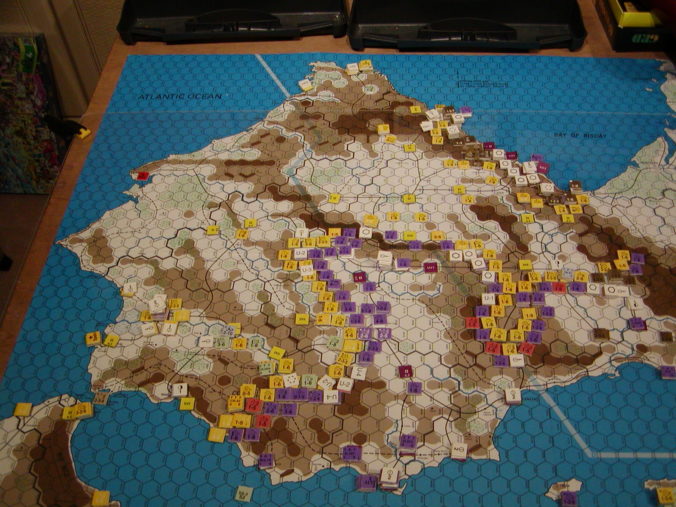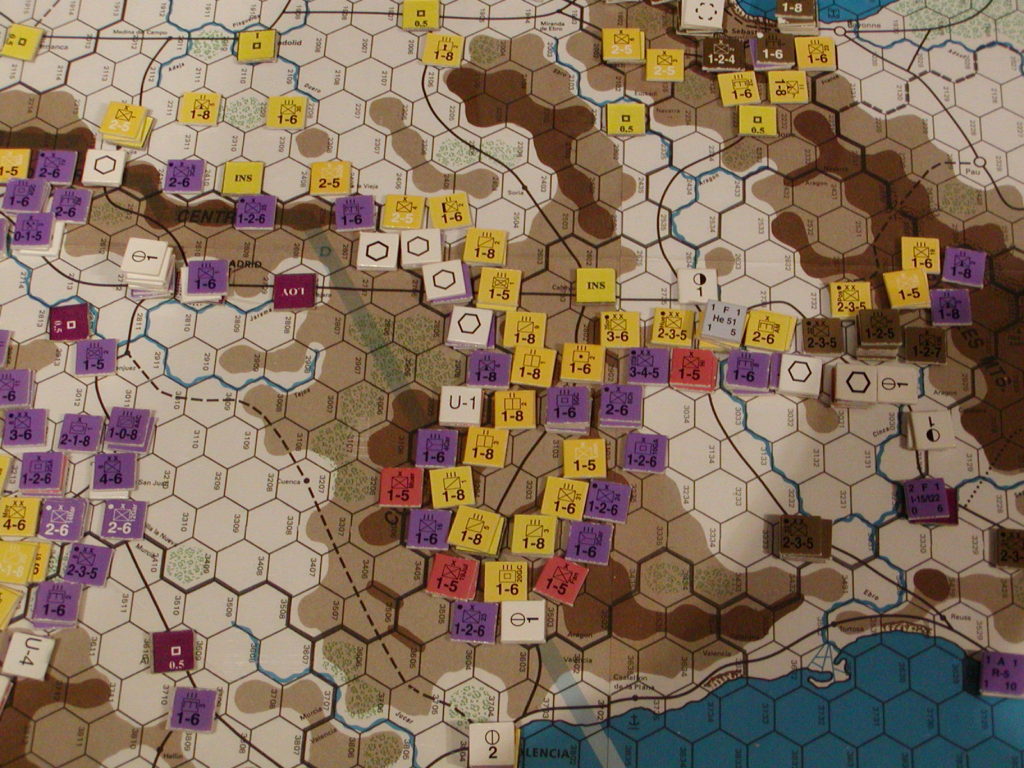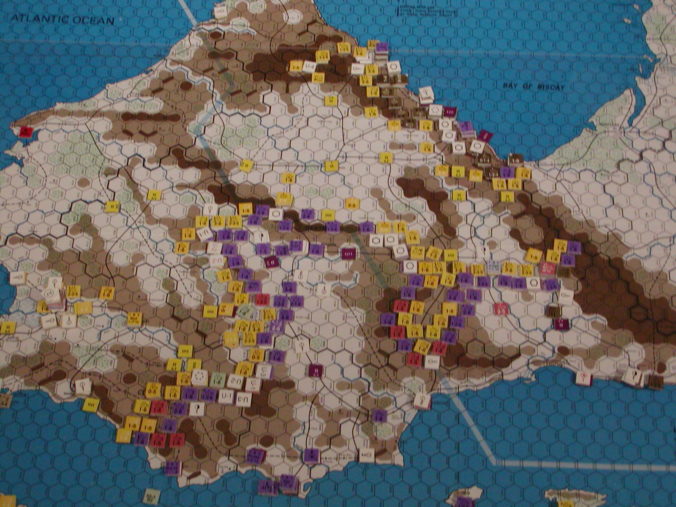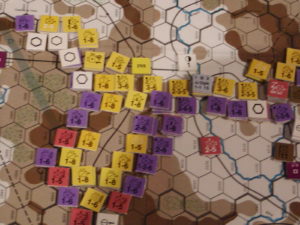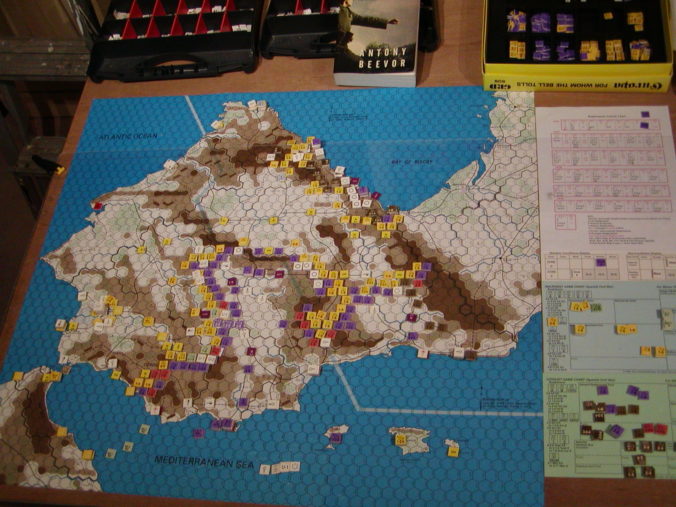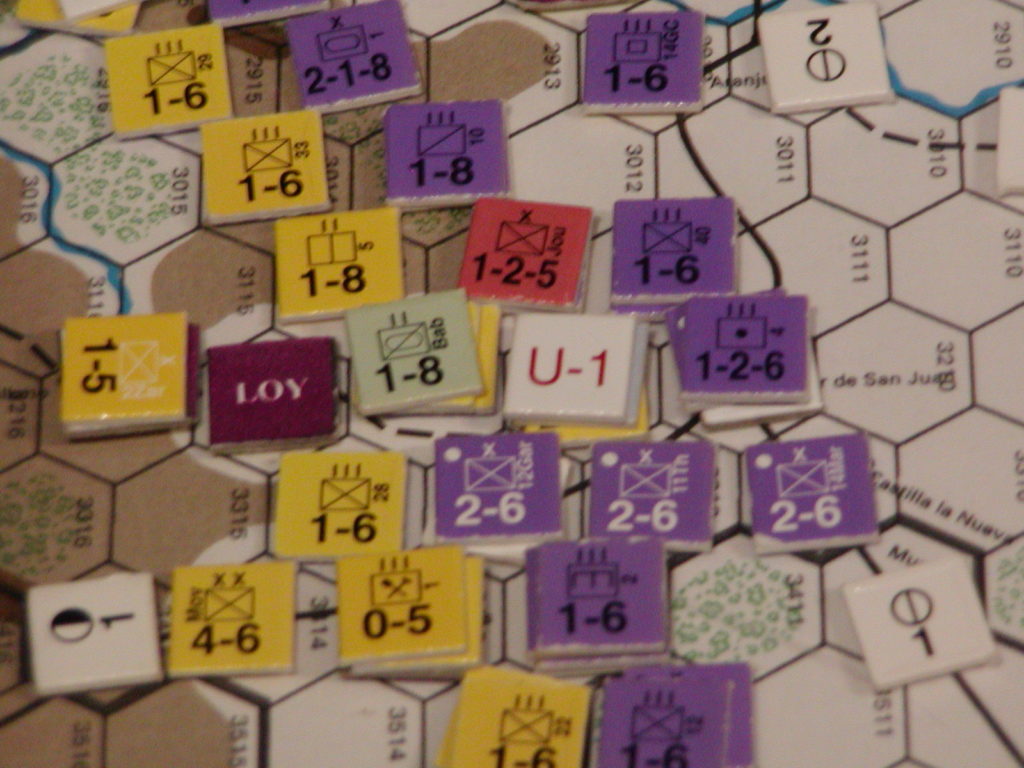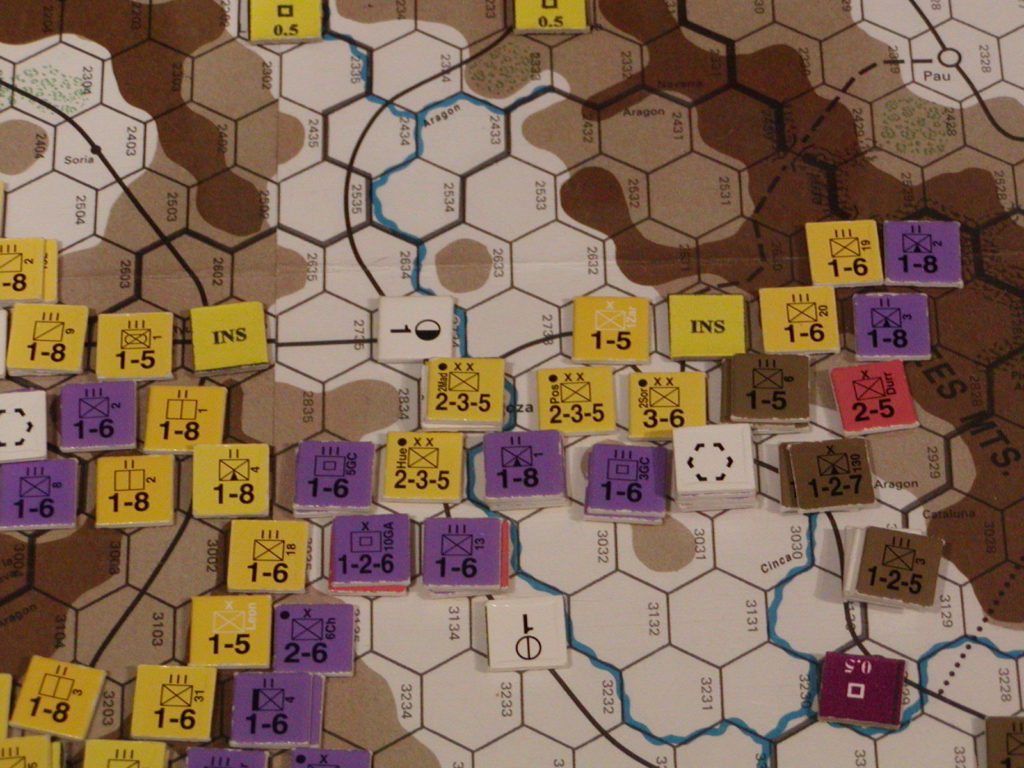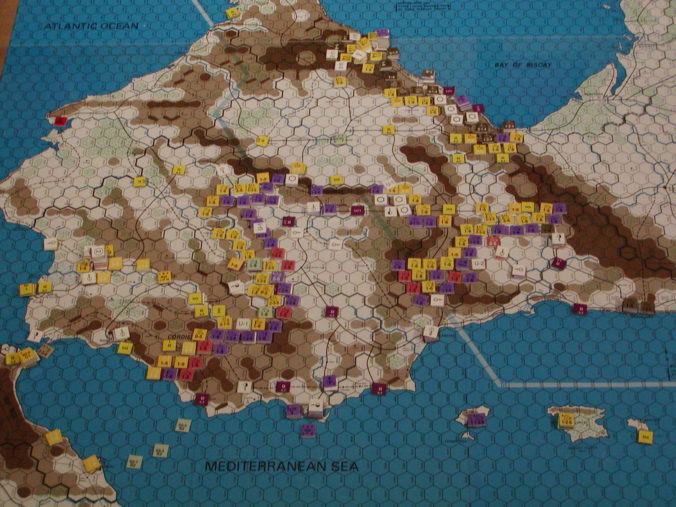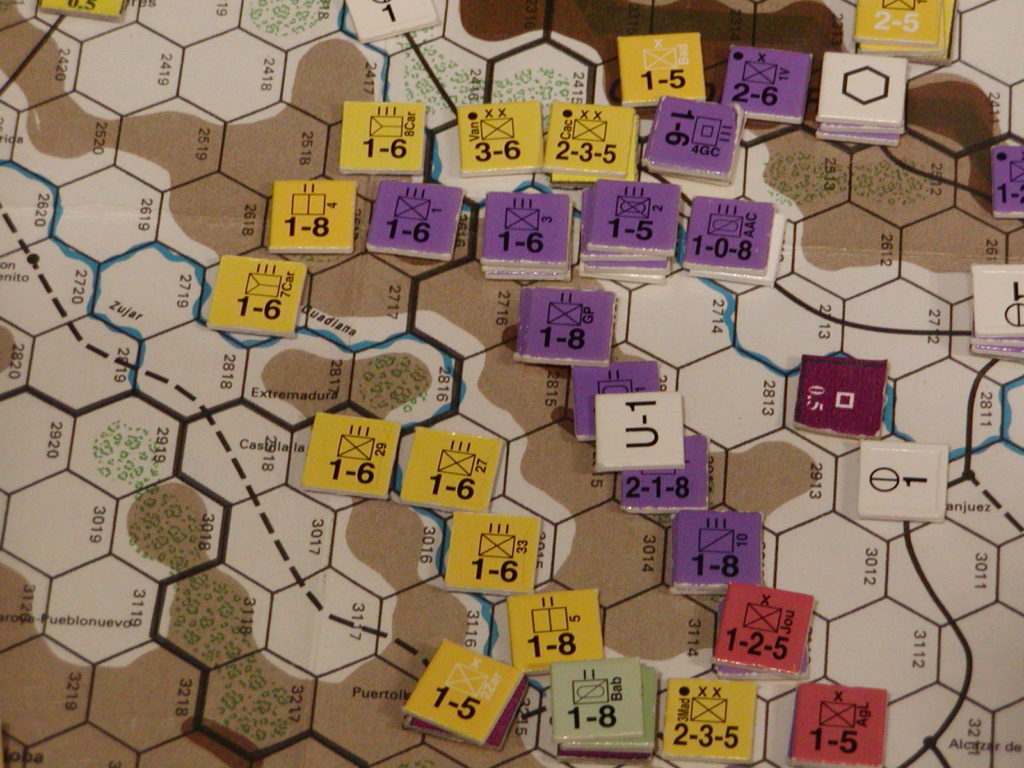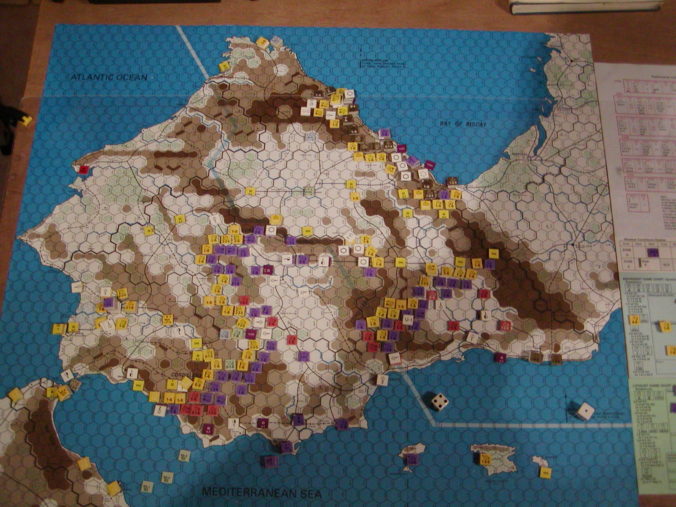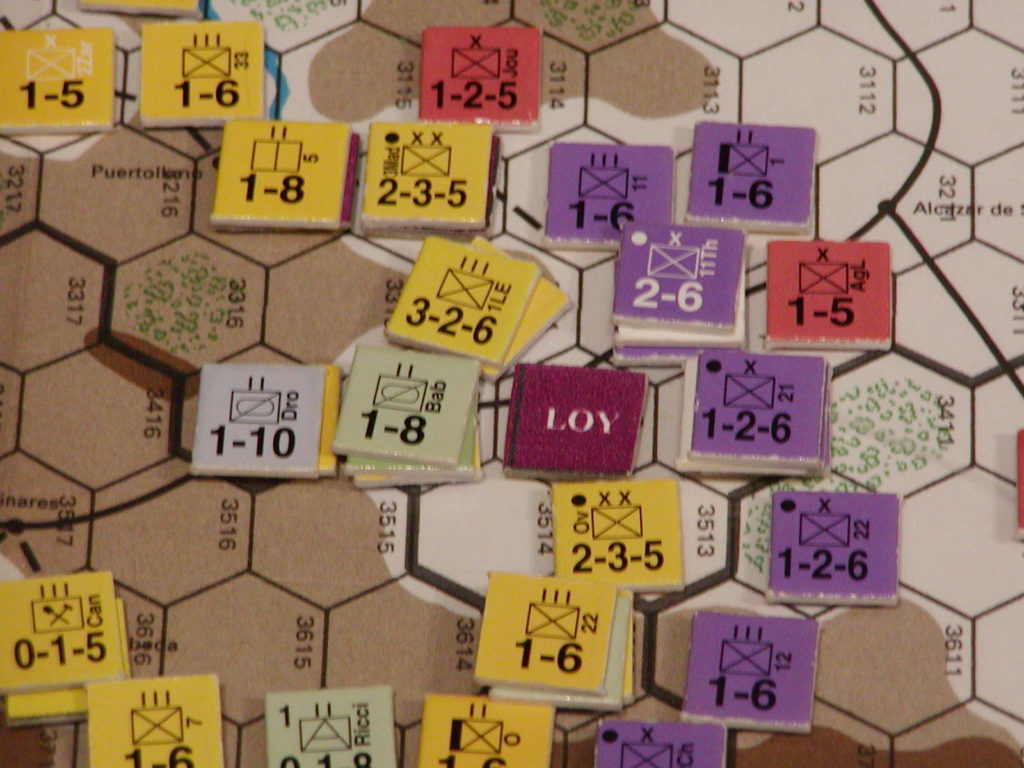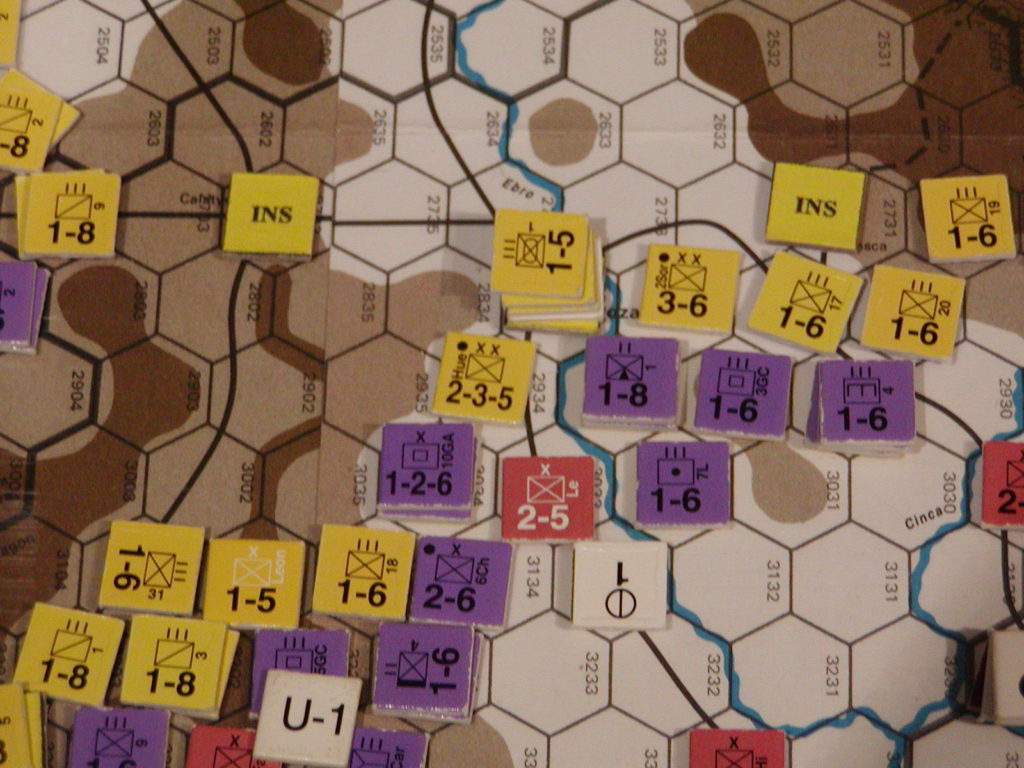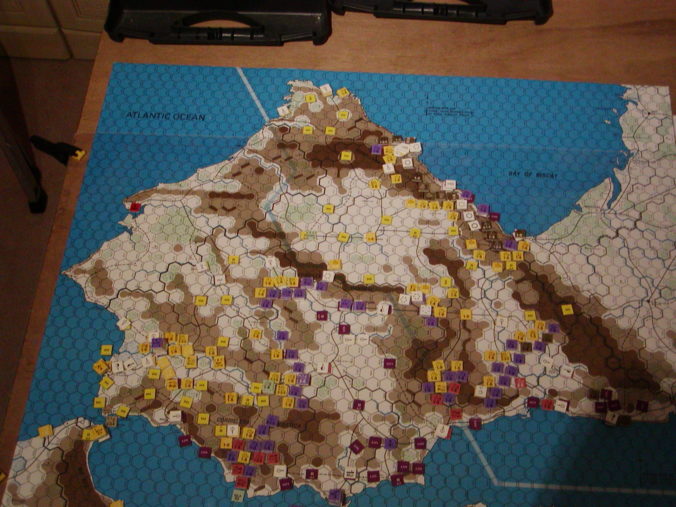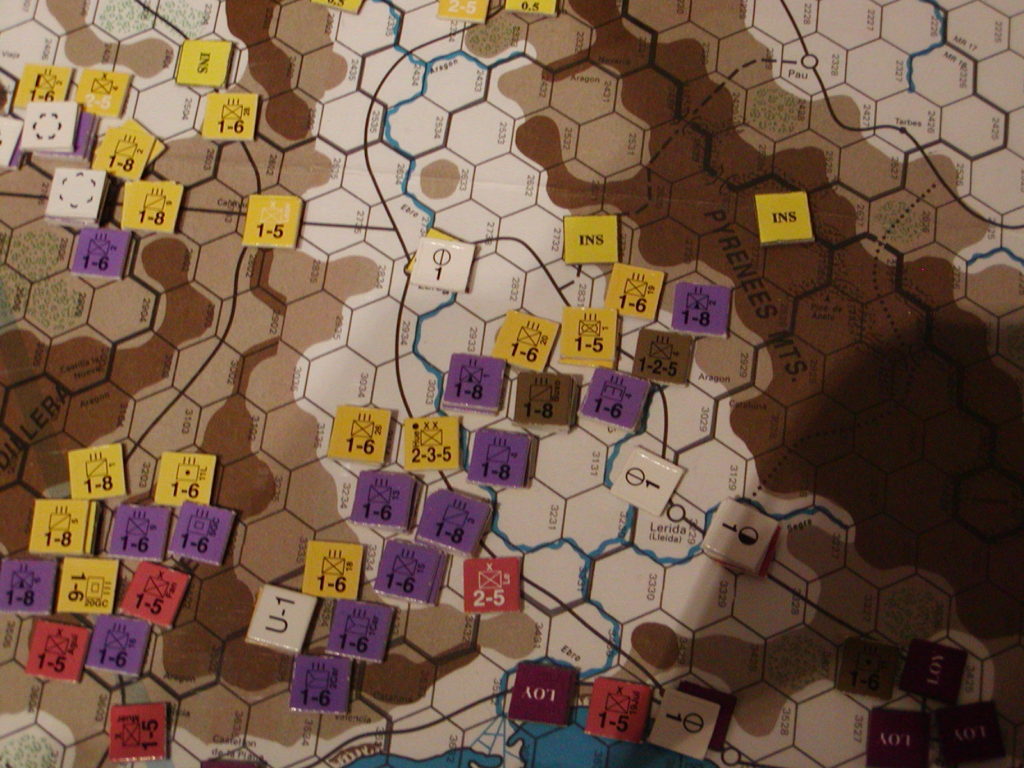by Alberto Arzanegui
This article appeared in the bulletin El Miliciano , nr. 1 (1993). Translated by Wolf Broszies
Without the Spanish Army there would not have been an insurgency in 1936. The leadership of the insurgency was composed nearly entirely from officers of the Army. The insurgent regiments and its soldiers constituted the backbone of the nationalist side in the Civil War. The parts of the Army staying loyal to the government were not used in the same way, many of its regiments being dissolved and incorporated into the new brigades of the republic. This article discusses the state of the Army in the summer of 36, right up to the nationalist insurgency.
The Army had for most parts adopted a passive attitude towards the newly declared republic Republic. The new civilian authorities undertook a rapid reform, mainly reducing the number of officers. Thus, in just one year, the number of men serving had gone from 190 generals and 20,303 officers and NCOs to 72 and 13,032 respectively. However the reformes failed to achive their main goal, which was a reduction in budget, which despite the reforms had to be increased. This and other decisions created nothing but discontent among the professional military. The second goal of the reforms, to keep the Army in its barracks, was not fulfilled either: Due to the volatile and violent political situation ts services were constantly needed to maintain law and order. Moroccan troops intervened for the first time in the Peninsula during the Sanjurpo rebellion. This increased the political power of the Army and contributed to its image as the last stalwart of order.
Reform and military resources
In the spring of 1936 the Republic decided to reduce the size of the Army for several reasons:
- reduce the state budget
- reduced need for national defense due to the political situation in Europe
- the desirability of the Army not being disproportionate to principles of a prudent national policy oriented towards the maintenance of peace abroad and the conservation and defense of order and public freedoms in the interior.
At least, these were the official given reasons and conditions. As as result of the reform, the Army was established as follows:
-
- Infantry: 40 regiments, 8 mountain battalions, two assault regiments, four machine gun battalions, one cyclist battalion, the Presidential Guard battalion, and the War Ministry group.
- Cavalry: 10 regiments, a machine cannon group, the Central Repository of Remonta with two deposits of breeding and dressage.
- Artillery: 16 light regiments, one regiment on horseback, four heavy regiments, four coast defense regiments, two regiments and a mountain group, three mixed groups, two anti-aircraft groups, three groups of artillery information, four army corps and eight divisional parks.
- Engineers: A regiment of sappers-miners, eight battalions and a group of sappers, a battalion of bridgeing engineers, two regiments of railroad engineers, a regiment of airdome engineers, a transport regiment, four mixed groups of sappers and telegraph engineers, Central Park of Automobiles and a Center of Transmissions and Technical Studies.
- Intendance: Eight divisional groups and two companies for the Balearic and Canary Islands plus sections at naval bases.
- Medical: Two commissions with four divisional groups each, sections for the cavalry division and the mountain brigades, companies for the archipelagos and mobile veterinary evacuation sections.
- Other forces: Republican music band, train corps, 16 mobilization and reservation centers and 60 recruiting boxes.
- Army of Africa:
- Spanish Foreign Legion: two legions (regiment-sized) to three banderas (bataillon-sized) plus one of deposit. Six battalions of light infantry, two groups of machine guns, two artillery groups, a battalion of sappers, a transport battalion, three quartermaster groups, two medical groups and two sea companies.
- Regular Forces Indigenous: five grupos with three infantry tanks, and one cavalry. Ifni Forces: Ifni battalion with three infantry tanks and one cavalry, and the forces of Cape Juby and Rio de Oro. Jalifian Forces: Five Mehalas and Jalalian Police.
- Forces in Guinea: The five companies of the Colonial Guard.
Army Structure and Command
The supreme head of the Army according to the constitution was the Minister of War. He exercised his authority through the Ministry of War and recieved advice by the Superior Council of War. The Ministry consisted of a subsecretariat in charge of administration and a Central Staff to which he had responsibility for everything related to war.
In place of the old captaincias general, eight Amry divisions were created that were in charge of everything related to instruction, discipline, services, administration, etc., of the units organic to or permanently assigned to them. Apart from these divisions, there were garrisons and autonomous regions such as the naval bases of Cadiz, El Ferrol and Cartagena, and regions such as Asturias, Baleares and Canarias. In case of war, the divisions would be grouped into three army corps: First Army Corps composed from the 1st and 2nd divisions and the cavalry division, second corps fomr the 3rd, 4rth and 5th divisions, and thrid Army corps from 6th, 7th and 8th divison. Each division consisted of:
- A divisional headquarters.
- Two infantry brigades to two regiments of two battalions each. Each of these consisted of four companies of infantry, a machine gun company plus a section of supporting arms. The regiments were established with two active battalions but enough equipment to outfit its third battalion at mobilization.
- A cavalry squadron, with an automatic weapons section and another of infantry cyclist.
- A light artillery brigade composed of two regiments, one of cannons and another of howitzers, both consisting of two groups of three batteries each. The regiments also had the necessary weapons to constitute their third group.
- A battalion of sappers-miners from three companies plus a park.
- A division park, quartermaster, health and transmission groups and veterinary and lighting sections.
Independent of these divisions existed the troops of corps of army and army:
- Two mixed mountain brigades. Each with a headquarters; four mountain battalions grouped in two half-brigades; a mountain artillery regiment with two groups of howitzers, to three batteries each; a company of sappers-miners and sections of services.
- Two regiments of two battalions of light tanks of combat and four battalions of machine guns, all dependent on the weapon of Infantry.
- Eight regiments of infantry, same as divisions, for naval bases and autonomous regions.
- A cavalry division with: Headquarters; three brigades of cavalry to two regiments of two groups, and each of them with two squadrons of sabers and another one of automatic arms; a group of cyclist infantry from a rifle company and another from machine guns; a group of machine-gun-guns of two squadrons; an artillery regiment on horseback with three groups of three batteries; a company of sappers on horseback and services.
- Four regiments of cavalry, four squadrons of sabers and one of automatic weapons.
- Four regiments of heavy artillery formed by two groups of three batteries each.
- Four regiments of artillery of coast, for the naval bases.
- Three mixed groups of artillery (light and mountain).
- Two Defense Against Aircraft (DCA) groups, each consisting of two anti-aircraft guns and an infantry machine gun company.
- A regiment of sappers-miners, from two battalions to four companies each.
- A battalion of pontoneros with four units of bridges.
- A regiment of railways formed by three battalions of three companies.
- Two autonomous mixed groups with a company of sappers and another of telephones.
- An artillery regiment.
- Four artillery parks of corps of army.
…and the rest of service units.
The African Army
The protectorate of Morocco was divided into two military districts: the Oriental (areas of Melilla and Rif) and the Occidental (Ceuta, Tetuan and Larache). Command fell to a division general and his staff with residence in Tetuan. The troops were as follows:
Eastern District :
- 1st Legion of the Third. In Tauima (Melilla), with the 1st, 2nd and 3rd Flags. Each flag had three companies of infantry and one of machine guns and machines of escort. During the war a fourth company will be added.
- Groups of Regular Indigenous Forces Melilla nº 2 in Nador; and Alhucemas nº 5 in Segangán. Each had three infantry tanks and one cavalry. The infantry had three companies of rifles and one of machine guns, and of the cavalry three squadrons.
- Eastern group of light infantry from Africa with battalions of hunters Melilla # 3 in Al Hoceima and Ceuta # 7 in Melilla. Each battalion has four companies of riflemen-grenadiers, one of machine guns, a section of machine of support, another of transmissions, another of workers and train of battalion.
- Eastern group of artillery with its staff in Melilla and consisting of two groups, one in Melilla with three batteries of 105 mm and one of 155 mm, and the second in the Rif with three 105 mm batteries, all of them howitzers.
- A mixed battalion of sappers-transmissions with four companies, two of each.
- Group of machine guns of position of Melilla.
Western Circumscription :
- 2nd Legion of the Third in Dar Riffien (Ceuta) with the 4th, 5th and 6th flags.
- Groups of Regular Forces Indigenous Tetuán nª 1 in Tetuán, Ceuta nº 3 in Ceuta and Larache nº 4 in Alcazarquivir. Its structure was the same as the previous two with the exception of the cavalry, which in these were only two squadrons.
- Western grouping of African hunters with battalions San Fernando nº 1 in Alcazarquivir, Las Navas nº 2 in Larache, Ceriñola nº 6 in Tetuán and Serrallo nº 8 in Ceuta. [At the time the Republic was established, there were five infantry regiments in Morocco, which were dissolved, numbers 40, 41, 42, 43 and 44. The latter gave rise to machine gun battalions No. 2 and No. 3, and the other four to eight battalions of hunters, who were numbered successively. During the ministry of Gil Robles, the numbers 4 and 5 were transformed into the groups of machine guns of position of Ceuta and Melilla.]
- Western grouping of artillery with its first group of three batteries of 105 mm, one of 155 mm and another one of coast in Ceuta; and the second group in Larache with three 105 mm batteries. Also all of howitzers.
- Mixed battalion of sappers.
- Group of machine guns of position of Ceuta.
In addition, it would be necessary to include the service troops: quartermasters, medical, transport, etc, and two companies of marines in Ceuta and Melilla.
During the mandate of Gil Robles reinforced the artillery in the Protectorate with six new batteries: two of 75, two of 105, one of 150 and one of 155.
There were other forces on the African continent that were the Ifni Shooter Battalion, created on June 11, 1934 and with three infantry tanks (similar to regular groups) and one of my cavalry. The Forces of the Sahara, formed by three garrisons featured in Cape Juby (the largest with a disciplinary company), Villa Cisneros and La Agüera. Sections of the different weapons gathered about 500 men. The Jalifian Forces, born as palace guard of the Khalifa and that will form the pictures of the future Moroccan army. There were five mehalas: Tetuán nº 1, Melilla nº 2, Larache nº 3, Rif nº 5 and Gomara nº 6, with headers in Tetuán, Melilla, Larache, Villa Alhucemas and Xauen. Each taxi included three of me) for a total of 360 men. The Jalaphian police were made up of five mezzanines and were about 1,650 men. In Guinea there was a minimal garrison made up of the Colonial Guard. It was constituted by five companies distributed throughout the territory that fulfilled the functions of police. The troops of this unit were mostly indigenous.
Army Strength
The total numbers were as follows:
- In the peninsular army, that is to say, the eight divisions, the two commandos of the Balearic and Canary Islands, plus the commandant exempt of Asturias, had on the paper 81 generals, 8,851 officers, 6,988 non-commissioned officers and 101,455 troops. The total was 117,385 men. There were also ten generals assimilated.
- The Army of Africa had three generals, 1,683 officers, 1,572 non-commissioned officers and 30,383 soldiers. The total was 33,641.
- The General Directorate of Morocco and Colonies had 527 officers, 246 non-commissioned officers and 12,713 troops. Total 13,486.
- CASE personnel were 4,285 in the territorial army, 594 in Africa and 354 in the Residency forces.
- In the Reserve there were 481 generals, 4 officers of staff, 97 officers of infantry, 21 of cavalry, 88 of artillery, 71 of engineers and 128 other auxiliary bodies. Complement officers were 1,930 infantry, 630 cavalry, 632 artillery, 158 engineers and 676 other corps. The number of retired military personnel was 13,642.
Mobilization
With the military reform the old structure of mobilization was discarded. Mobilization and Reserve Centers were created tak take over the task of organizing the individual soldiers and assigning them to their units. The soldiers, once they joined thre reserve, passed to a first situation of availability always belonging to the active units in which they served. In case of mobilization, these reserves would complete the templates of the existing units at first, to later unfold these units. Those in the second situation, depended on the mobilization center of their place of residence and would form if necessary reserve units in a number dependent on the nature of the mobilization. The Mobilization Centers were sixteen, one for each infantry brigade. Recruitment is done through 60 Recruit Boxes. The number of handlers for recruitment and replacement was as follows (for years):
| 1924 | 1925 | 1926 | 1927 | 1928 | 1929 | 1930 | 1931 | 1932 | 1933 |
| 142,901 | 140,275 | 150.116 | 153,885 | 139,139 | 144,615 | 148,522 | 148,423 | 149,140 | 157,359 |
The actual situation
In July 1936, the army units were not fully staffed. The summer period and rumors of uprising had led to a massive granting of permits. Then the real situation of the barracks, by divisions and regions:
| Republican zone | National zone | |||
| Infantry | ||||
| I | 2,957 | 58% | ||
| II | 785 | 62% | 2,860 | 56% |
| III | 3,838 | 61% | ||
| IV | 4.335 | 61% | ||
| V | 382 | 55% | 2.618 | 52% |
| SAW | 1.643 | 84% | 3.261 | 55% |
| VII | 2.802 | 55% | ||
| Balearics | 655 | 52% | 729 | 57% |
| Canary Islands | 1.475 | 58% | ||
| Artillery | ||||
| I | 1.632 | 54% | ||
| II | 1,744 | |||
| III | 1.747 | 58% | ||
| IV | 1.525 | 61% | ||
| V | 792 | 36% | 955 | 96% (?) |
| SAW | 532 | 79% | 1,242 | fifty% |
| VII | 1,174 | 56% | ||
| VIII | 1.420 | |||
| Balearics | 836 | 70% | ||
| Canary Islands | 1.008 [1] | |||
| Chivalry | ||||
| II | 395 | 62% | ||
| III | 413 | 65% | ||
| IV | 800 | 63% | ||
| V | 347 | 55% | ||
| SAW | 1,207 | 64% | ||
| VII | 807 | 64% | ||
| Engineers | ||||
| I | 3.128 | 71% | ||
| II | 284 | 67% | ||
| III | 258 | 61% | ||
| IV | 268 | 63% | ||
| V | 488 | |||
| SAW | 233 | 55% | 248 | 59% |
| VIII | 212 | fifty% | ||
Equipment
As for the armament, the infantry had the rifle of own production Mauser M-1.893 of 7 mm. The most common machine gun was the Hotchkiss M-25 7mm and the heavy Hotchkiss M-14. Elite units (legions, hunters, marines and mountain troops) used the Star S 135 and Gollat 9m submachine guns. The mortars were either the Spanish Valero of 50 mm, or those of 81 mm that were copies of the French Brandt.
Most infantry guns were the old Schneider M-08 70mm mountain. The elite units were being equipped with the new Arellano L-32 45 mm. In addition to the organic artillery units, infantry units had some battalion-level pieces. Thus, each battalion of hunters, each flag of the Third, each taxi of Regulares and the Knights of Ifni had a piece of accompaniment. In the rest of the army, each battalion of infantry (three by regiment) and each battalion of mountain had the same thing.
Each DCA group had 8 pieces, the three mixed groups totaling 20 pieces and an unknown number of fixed pieces. In the garrison of Villa Cisneros there were two other cannons and each artillery grouping in Morocco had 28 pieces. If we add all the artillery crews gives us a total of 916 pieces of campaign in the territorial army, 88 in Africa, 192 in coastal regiments and 16 in anti-aircraft groups.
In artillery the basic unit was the four-piece battery. Like half Europe, it counted massively with the famous French barrel Schneider M-06 of 75 mm that represented about 60% of the whole park. In theory he had to equip only two of the groups in the light artillery regiments, although in practice he practically constituted all three. The light batteries in Morocco and those of the Islands had the modern Vickers M-22 of 105 mm manufactured in Spain. The mountain regiments and the group of Asturias had the Schneider M-19 mountain howitzer of 105 mm. The heavy artillery regiments had a group equipped with 150 mm Krupp M-13 guns and the other with 155 mm Schneider M-17.
The four regiments of coast artillery gathered in total 192 pieces mostly of fixed character. They were broken down as follows: Regiment No. 1 had 6 batteries with a total of 24 pieces, Regiment No. 2 had 13 batteries with 52 pieces, Regiment No. 3 had 16 batteries and 64 pieces, and Regiment No. 4 had 13 batteries with 52 pieces. There were also pieces of these characteristics in the mixed groups of the archipelagos, but the number of them is unknown. Of the total, 132 of them were between 101.6 and 381 mm of caliber. Many of them were old pieces from fixed ships, although there were some mobile batteries with Elswick Mark I 127 mm guns and some anti-aircraft parts. Precisely in this type of weapon, there were in acceptable number the Danish M-33 of 20 mm and the French machine guns Hotchkiss of 13.2 mm. The Spanish Army had no anti-tank guns.
The Spanish military industry was concentrated in Trubia, where the 45, 105 and 155 mm guns were manufactured, as well as modernizing those of 75. In Reinosa and Placencia de las Armas artillery pieces were also manufactured.
Between the two regiments of existing cars only had 20 operating cars: 10 Renault FT-17, 5 Schneider M-16 and 5 Trubia A-4, in addition, there were about 62 armored transports. All this stuff was really outdated. In contrast, the group of machine-gun-guns had 28 modern armored vehicles. They were a Spanish version of the 1 Tm Dodge truck and had two 8 mm machine guns.
Finally, the engineering units were equipped with French material from the Great War.
As has been said each infantry regiment had a reserve of arms to constitute its third battalion when it was decided, the light artillery regiments to constitute their third group and generally, the rest of units and bodies had the necessary material to equip up to 25% of its troops in time of peace. In addition, they had the regulatory reserves. In the divisional and army corps parks an enormous amount of arms and equipment was stored from the reserves for a mobilization and of the remnants that had produced the reduction of Azaña. The exact figures of this material are unknown, although it is estimated that no division park had less than 25,000 rifles and at least twice as many corpses, for a total of 400,000 to 500,000 in the whole army. The total quantities of machine guns and machine guns were 2,247 and 1,458 for the Territorial Army and 528 and 220 for the African Army.
Order of Battle in July 1936
Infantry Regiments
nº 1 Wad-Ras Madrid nº21 Valencia Santander
nº 2 León Madrid nº22 San Marcial Burgos
nº 3 Castilla Badajoz nº23 América Pamplona
nº 4 Covadonga Madrid nº24 Bailén Logroño
nº 5 Lepanto Granada nº25 San Quintín Valladolid
nº 6 Granada Sevilla nº26 Toledo Zamora
# 7 Pavia Algeciras # 27 Algiers Caceres
nº 8 Vitoria [2] Málaga nº28 La Victoria Salamanca
nº 9 Otumba Valencia nº29 Zamora La Coruña
nº10 Guadalajara Valencia nº30 Zaragoza Lugo
nº11 Alicante rate nº31 Burgos León
nº12 Vizcaya Alcoy nº32 Milan Oviedo
nº13 Badajoz Barcelona nº33 Cádiz Cádiz
nº14 Alcántara Barcelona nº34 Seville Cartagena
nº15 Almansa Tarragona nº35 Mérida El Ferrol
No. 16 Albuera Lerida nº36 Palma Palma
nº17 Aragón Zaragoza nº37 Baleares Mahón
nº18 Gerona Zaragoza nº38 Tenerife Santa Cruz
No. 19 Galicia Jaca nº39 Canarias Las Palmas
nº20 Valladolid Huesca nº40 Simancas Gijón
Mountain Battalions
nº 1 Chiclana Figueras nº 5 Flanders Vitoria
nº 2 Asia Gerona nº 6 Garellano Bilbao
nº 3 Madrid Seo Urgell nº 7 Arapiles Estella
nº 4 City Rodrigo Barbastro nº 8 Sicilia Pamplona
Combat Tank Regiments
nº 1 Madrid nº 2 Zaragoza
Battalions of machine guns
nº 1 Castellón nº 3 Almería
nº 2 Plasencia nº 4 Manresa
Cyclist Battalion Alcalá de Henares
Presidential Guard Battalion and War Ministry Group Madrid
Cavalry Regiments
nº 1 Castillejos Zaragoza nº 6 Numancia Vitoria
nº 2 Villarrobledo Palencia nº 7 Lusitania Valencia
nº 3 Calatrava Salamanca nº 8 Taxdir Sevilla
nº 4 Spain Burgos nº 9 Santiago Barcelona
nº 5 Farnesio Valladolid nº10 Montesa Barcelona
Aranjuez group of machine gunners
Light artillery regiments
No. 1 Getafe nº 9 Zaragoza
No. 2 Vicálvaro nº10 Calatayud
No. 3 Sevilla nº11 Burgos
No. 4 Granada nº12 Logroño
No. 5 Valencia # 13 Segovia
No. 6 Murcia nº14 Valladolid
No. 7 Barcelona nº15 Pontevedra
nº 8 Mataró nº16 La Coruña
Heavy artillery regiments
nº 1 Córdoba nº 3 San Sebastián
nº 2 Gerona nº 4 Medina del Campo
Mountain artillery regiments
nº 1 Barcelona nº 2 Vitoria
Regiment of artillery on horseback Campamento (Madrid)
Coastal artillery regiments
nº 1 Cadiz nº 3 Cartagena
nº 2 El Ferrol nº 4 Mahón
Mixed Artillery Groups
nº 1 Palma nº 3 Las Palmas
No 2 Tenerife
Defense Groups against Aircraft (ACD)
nº 1 Campamento nº 2 Zaragoza
Mountain artillery group Oviedo
Regiment of sapper miners Madrid
Regiments of railways
nº 1 Leganés nº 2 Leganés
El Pardo transmission regiment
Regiment of Aerostación Guadalajara
Battalions of Sappers
nº 1 Carabanchel nº 5 Zaragoza
nº 2 Sevilla nº 6 San Sebastián
nº 3 Valencia nº 7 Alcalá de Henares
nº 4 Barcelona nº 8 Gijón
Bridging Engineer Battalion Saragossa
Mixed groups sappers-telephones
No. 1 Palma nº 3 Tenerife
nº 2 Mahón nº 4 Las Palmas
TO/Es of Spanish Army units in July 1936
| Unity | Official | Non-commissioned officers | Troop |
| Rto. infantry | 49 | 87 | 1.122 [3] |
| Bon. Montana | 27 | Four. Five | 561 |
| Bon. machine guns | 22 | 42 | 362 |
| Bon. cyclist | 36 | 74 | 789 |
| Rto. fighting cars | 36 | 87 | 399 |
| Gpo. War Ministry | 10 | 17 | 342 |
| Rto. chivalry | 35 | 35 | 558 |
| Gpo. auto-cannon | 16 | 17 | 174 |
| Rto. sappers | 39 | 57 | 853 |
| Bon. sappers | 19 | 27 | 373 |
| Rto. railways | 38 | 57 | 779 |
| Rto. transmissions | 56 | 92 | 783 |
| Rto. art. light | 32 | 54 | 628 |
| Rto. art. heavy | 31 | 60 | 576 |
| Rto. art. horse | 44 | 79 | 967 |
| Rto. art. Montana | 3. 4 | 63 | 924 |
| Gpo. DCA | 13 | 22 | 237 |
| Third Flag | twenty-one | 29 | 618 |
| Tábor inf. Regular | 18 | twenty-one | 473 [4] |
| Tábor cab. Regular | 17 | 2. 3 | 317 [5] |
| Bon. Ifni Handles | 31 | 38 | 1,166 |
| Unity | Rifles | Fusam | Machine guns | Mortars | Cannons |
| Bon. inf. | 446 | 16 | 24 | 17 | 1 |
| Bon. Montana | 541 | 16 | 8 | 17 | 1 |
| Bon. ametra. | 156 | 4 | 24 | 4 | |
| Bon. cyclist | 635 | 28 | 24 | 28 | |
| Rto. Cars [6] | 569 | ||||
| Rto. cab. | 595 | fifteen | 8 | 2 | |
| Rto. art. lig. | 453 | 9 | 36 | ||
| Rto. art. cab. | 790 | 9 | 36 | ||
| Rto. art. feet | 266 | 6 | 24 | ||
| Gpo. DCA | 111 | 6 | 8 |
The provision of rifles. of sappers, of railroads, of transmissions and of bones. of sappers was 989, 556, 920 and 454 respectively. The gpo. of auto-machine guns had 214 rifles, 5 fusam and 28 vehicles.
Notes
- A figure that reflects both regions: the Canary Islands and the Balearic Islands.
- Later it was called of Oviedo.
- This regiment is of two battalions.
- Of the total, 394 soldiers were Moors.
- Of the total, 260 were Moors.
- It had 67 vehicles.
Sources
The Spanish Army’s Order of Battle in July 1936 from the Nafzinger Collection
